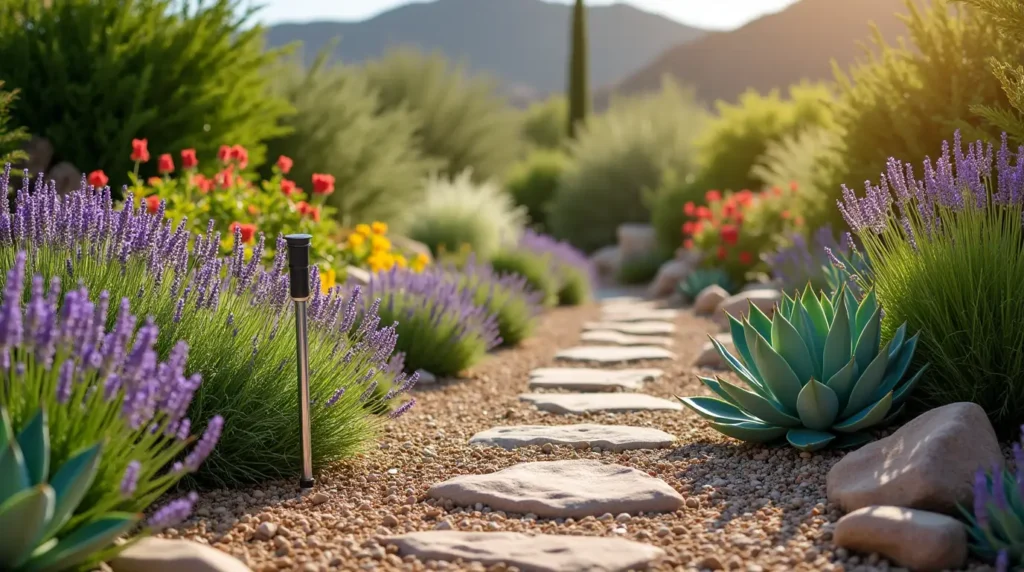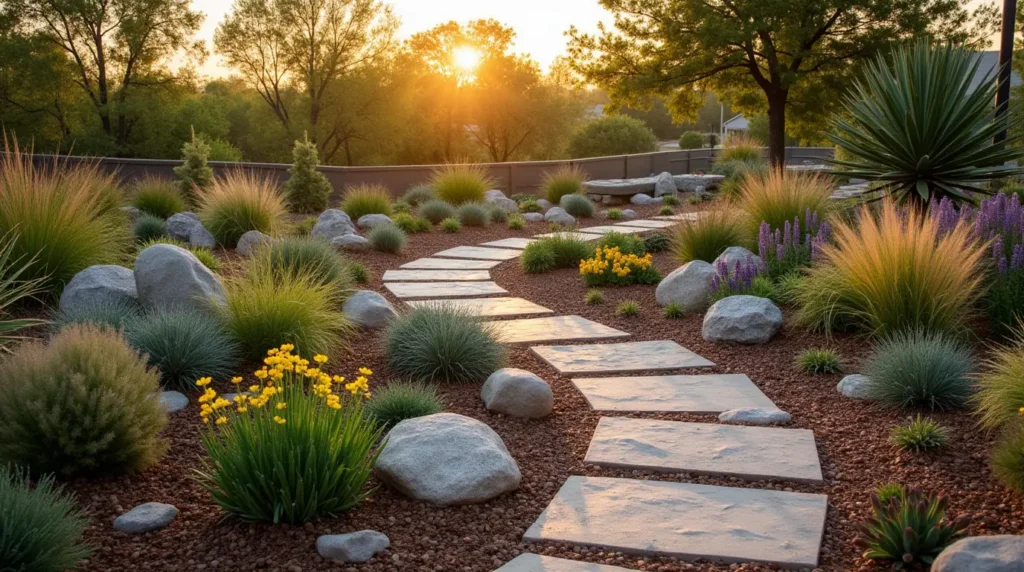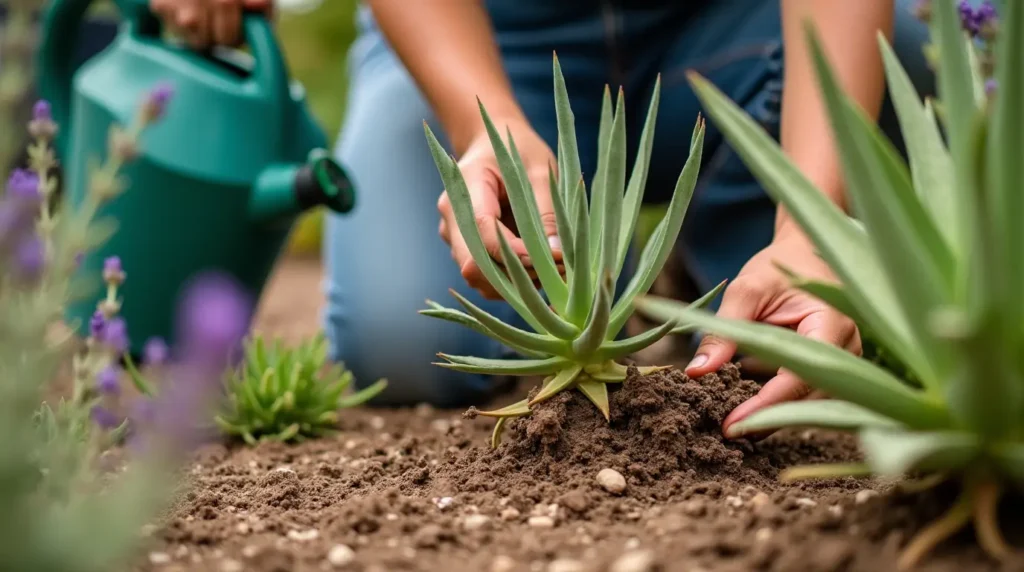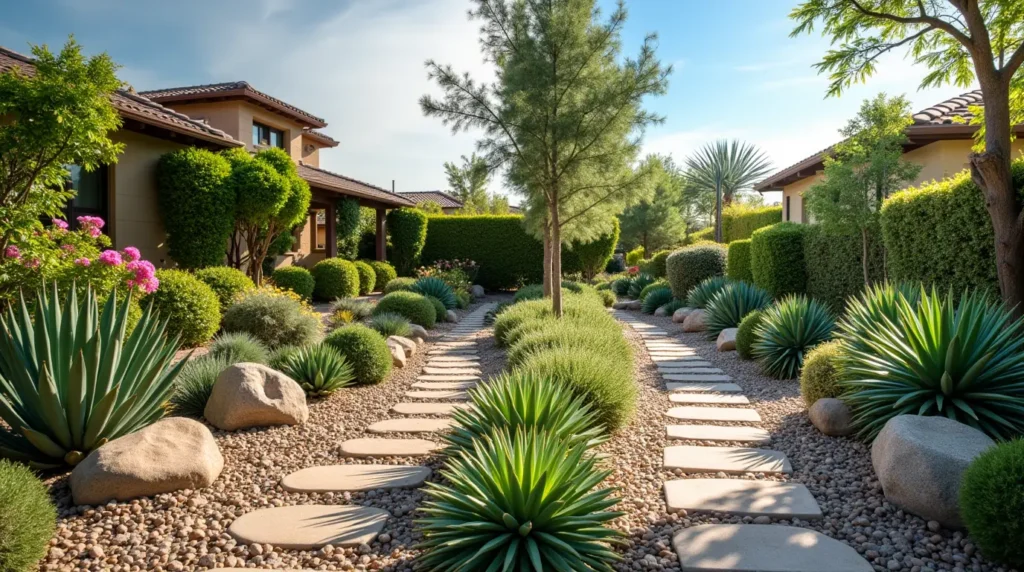Drought-resistant plants, also known as xerophytes, have evolved to survive in arid and semi-arid environments with minimal water availability. These plants have developed various adaptations to conserve water, such as deep root systems, succulent leaves, and reduced leaf surface area to minimize water loss through transpiration. These adaptations make them ideal for water-wise gardens, as they require significantly less irrigation than traditional garden plants.
In addition to their water-saving capabilities, drought-resistant plants often exhibit unique and striking features that add visual interest to a garden. Their diverse forms, textures, and colors can create a visually captivating landscape while reducing the need for excessive watering. By understanding the characteristics and benefits of drought-resistant plants, gardeners can make informed choices when selecting species for their water-wise gardens.
Key Takeaways
- Drought-resistant plants are ideal for water-wise gardens due to their ability to thrive in low-water conditions.
- Some of the most beautiful drought-resistant plants for your garden include lavender, yucca, and agave.
- Designing a stunning water-wise garden with drought-resistant plants involves careful planning and consideration of plant placement and watering needs.
- Caring for drought-resistant plants in your garden involves proper watering, mulching, and occasional pruning to maintain their health and beauty.
- Incorporating drought-resistant plants into your landscape not only conserves water but also creates a low-maintenance and eco-friendly garden.
The Top 10 Most Beautiful Drought-Resistant Plants for Your Garden
1. Lavender (Lavandula spp.): Known for its fragrant blooms and aromatic foliage, lavender is a popular choice for water-wise gardens. This resilient herb thrives in dry conditions and adds a delightful scent to the garden.
2. Agave (Agave spp.): With its striking rosette form and architectural appeal, agave is a stunning addition to drought-tolerant landscapes. These succulent plants come in a variety of sizes and colors, making them versatile for garden design.
3. Yucca (Yucca spp.): Characterized by its sword-shaped leaves and dramatic flower spikes, yucca is a low-maintenance plant that adds a bold statement to water-wise gardens. 4.
Red Hot Poker (Kniphofia uvaria): Also known as torch lily, this perennial plant produces vibrant, torch-like flower spikes that attract pollinators while thriving in dry conditions. 5. Russian Sage (Perovskia atriplicifolia): With its aromatic foliage and airy spires of lavender-blue flowers, Russian sage brings a touch of elegance to drought-resistant landscapes.
6. Penstemon (Penstemon spp.): This diverse genus offers a wide range of flower colors and shapes, making it a versatile choice for adding vibrant blooms to water-wise gardens. 7.
California Poppy (Eschscholzia californica): Known for its cheerful orange blooms, the California poppy is a resilient wildflower that thrives in dry, sunny conditions. 8. Desert Marigold (Baileya multiradiata): This bright yellow flowering perennial adds a splash of color to drought-tolerant gardens while attracting beneficial pollinators.
9. Blanket Flower (Gaillardia spp.): With its daisy-like blooms in vibrant hues of red, yellow, and orange, the blanket flower is a hardy perennial that thrives in hot, dry climates. 10.
Mediterranean Spurge (Euphorbia characias): This evergreen perennial offers architectural interest with its upright stems and chartreuse flowers, making it an eye-catching addition to water-wise landscapes.

How to Design a Stunning Water-Wise Garden Using Drought-Resistant Plants
Designing a stunning water-wise garden with drought-resistant plants involves careful consideration of plant selection, layout, and maintenance practices. When planning the garden layout, grouping plants with similar water needs can help optimize irrigation efficiency and create visually cohesive plantings. Incorporating a variety of textures, colors, and heights can add visual interest to the landscape while ensuring year-round appeal.
In addition to plant selection, hardscaping elements such as gravel pathways, rock gardens, and decorative mulch can complement drought-resistant plants and reduce the need for extensive watering. These features not only enhance the aesthetic appeal of the garden but also contribute to water conservation efforts. Furthermore, incorporating sustainable irrigation methods such as drip irrigation or rainwater harvesting systems can help minimize water usage while providing essential moisture to drought-resistant plants.
By integrating these design principles and practices, gardeners can create visually stunning water-wise gardens that thrive with minimal water input.

Tips for Caring for Drought-Resistant Plants in Your Garden
| Plant Name | Watering Frequency | Soil Type | Sunlight Needs |
|---|---|---|---|
| Lavender | Every 2 weeks | Well-drained | Full sun |
| Succulents | Every 3 weeks | Sandy or rocky | Full sun to partial shade |
| Yucca | Every 4 weeks | Sandy or loamy | Full sun |
| Agave | Every 3 weeks | Sandy or well-drained | Full sun |
While drought-resistant plants are well-adapted to survive in dry conditions, proper care is essential to ensure their health and vitality in the garden. Here are some tips for caring for drought-resistant plants: 1. Soil Preparation: Ensure well-draining soil by amending with organic matter such as compost or peat moss to improve water retention and root development.
2. Watering: While drought-resistant plants require less frequent watering once established, it’s crucial to provide deep watering during dry spells to encourage strong root growth. 3.
Mulching: Apply a layer of organic mulch around plants to conserve soil moisture, suppress weeds, and regulate soil temperature. 4. Pruning: Regular pruning helps maintain plant shape, remove dead or damaged growth, and promote air circulation within the canopy.
5. Fertilization: Use a balanced, slow-release fertilizer sparingly to avoid excessive vegetative growth that may increase water demand. 6.
Monitoring: Keep an eye on plant health and adjust care practices based on seasonal weather patterns and individual plant requirements. By following these care tips, gardeners can ensure the long-term success of drought-resistant plants in their water-wise landscapes while minimizing water usage and maintenance efforts.
The Benefits of Incorporating Drought-Resistant Plants into Your Landscape
Incorporating drought-resistant plants into your landscape offers numerous benefits beyond water conservation. Some of the key advantages include: 1. Water Conservation: Drought-resistant plants significantly reduce the need for irrigation, helping conserve water resources and lower utility costs.
2. Low Maintenance: Once established, these plants require minimal upkeep, saving time and effort on watering and maintenance tasks. 3.
Environmental Resilience: Drought-resistant plants contribute to ecosystem resilience by supporting biodiversity and reducing the ecological impact of landscaping practices. 4. Climate Adaptation: As climate change leads to more frequent drought conditions in many regions, using drought-resistant plants helps landscapes adapt to changing environmental conditions.
5. Aesthetic Appeal: Many drought-resistant plants offer unique textures, colors, and forms that enhance the visual appeal of landscapes while requiring less water input. By recognizing these benefits, homeowners and landscapers can make informed decisions about incorporating drought-resistant plants into their outdoor spaces for sustainable and visually appealing results.

Creating a Low-Maintenance Garden with Drought-Resistant Plants
Choosing the Right Plants
By selecting species that thrive in local climate conditions and soil types, gardeners can create resilient plantings that require minimal intervention. Incorporating native species and well-adapted cultivars can further enhance the low-maintenance nature of the garden by aligning with local ecological systems and reducing the need for extensive care.
Design Principles for Low-Maintenance Gardens
Integrating naturalistic design principles such as layering, mass planting, and seasonal interest can create visually appealing landscapes that evolve with minimal human intervention.
Creating a Sustainable and Beautiful Garden
By embracing the concept of “right plant, right place,” gardeners can establish low-maintenance gardens that showcase the beauty and resilience of drought-resistant plants while minimizing resource inputs.
Drought-Resistant Plants: A Sustainable Solution for Water Conservation
Drought-resistant plants offer a sustainable solution for water conservation in landscaping practices by reducing reliance on irrigation and promoting ecological resilience. By selecting species that are well-suited to local climate conditions and soil types, homeowners and landscapers can create beautiful outdoor spaces that thrive with minimal water input. In addition to their water-saving benefits, drought-resistant plants contribute to sustainable landscaping practices by supporting biodiversity, reducing chemical inputs, and minimizing maintenance requirements.
These plants play a crucial role in promoting environmental stewardship and adapting landscapes to changing climatic conditions. By embracing the use of drought-resistant plants in outdoor environments, individuals can contribute to broader efforts aimed at conserving water resources and fostering resilient landscapes that harmonize with natural ecosystems.

The Best Drought-Resistant Plants for Different Climate Zones
The selection of drought-resistant plants varies based on climate zones, as different regions have distinct environmental conditions that influence plant adaptability. In arid climates, succulents such as cacti and agave thrive due to their ability to store water in fleshy tissues and withstand intense heat. In Mediterranean climates characterized by hot, dry summers and mild winters, plants like lavender, rosemary, and olive trees excel in drought tolerance while adding a touch of Mediterranean charm to landscapes.
In temperate climates with seasonal rainfall patterns, native grasses such as blue grama (Bouteloua gracilis) and ornamental grasses like feather reed grass (Calamagrostis acutiflora) offer resilient options for water-wise gardens. For coastal regions with sandy soils and salt-laden air, salt-tolerant plants like sea lavender (Limonium spp.) and beach sunflower (Helianthus debilis) thrive in challenging seaside conditions while conserving water resources. By understanding the specific needs of different climate zones, gardeners can select appropriate drought-resistant plants that align with local environmental factors and contribute to sustainable landscaping practices.
Enhancing Your Garden’s Beauty with Drought-Resistant Plants
Drought-resistant plants offer an array of opportunities to enhance a garden’s beauty through their unique forms, textures, colors, and seasonal interest. From the architectural elegance of agave and yucca to the vibrant blooms of blanket flower and penstemon, these plants contribute to visually captivating landscapes while requiring minimal water input. Incorporating diverse foliage types such as the silvery-gray leaves of Russian sage or the spiky rosettes of succulents adds depth and visual contrast to garden compositions.
Additionally, selecting plants with varying bloom times ensures continuous color displays throughout the growing season while conserving water resources. By carefully curating a selection of drought-resistant plants that complement each other in form and function, gardeners can create visually stunning landscapes that celebrate the beauty and resilience of these water-wise species.
Drought-Resistant Plants: A Practical and Eco-Friendly Choice for Your Garden
Choosing drought-resistant plants for your garden represents a practical and eco-friendly decision that aligns with sustainable gardening principles. By reducing water consumption and maintenance requirements, these plants offer a pragmatic solution for creating beautiful outdoor spaces while minimizing environmental impact. Furthermore, the use of drought-resistant plants supports biodiversity by providing habitat and food sources for pollinators and beneficial wildlife while reducing reliance on chemical inputs commonly associated with high-maintenance landscapes.
Embracing the practicality and eco-friendliness of drought-resistant plants empowers individuals to make conscientious choices that contribute to environmental stewardship and promote sustainable living practices within their outdoor environments.
FAQ
What are drought-resistant plants?
Drought-resistant plants, also known as xerophytes, are plants that have adapted to survive in arid or drought conditions. These plants have developed special features such as deep root systems, succulent leaves, or thick cuticles to store water and withstand long periods of drought.
What makes drought-resistant plants ideal for water-wise gardens?
Drought-resistant plants are ideal for water-wise gardens because they require minimal irrigation once established. Their ability to thrive in low-water conditions makes them a sustainable choice for conserving water in landscapes and gardens.
What are the benefits of incorporating drought-resistant plants into your landscape?
Incorporating drought-resistant plants into your landscape can help conserve water, reduce maintenance needs, and create a beautiful, sustainable garden. These plants can also attract pollinators and wildlife while adding visual interest to the landscape.
How can I design a stunning water-wise garden using drought-resistant plants?
To design a stunning water-wise garden, consider selecting a variety of drought-resistant plants with different colors, textures, and heights. Group plants with similar water needs together, and incorporate hardscaping elements such as gravel pathways and mulch to reduce water evaporation.
What are some tips for caring for drought-resistant plants in my garden?
When caring for drought-resistant plants, it’s important to provide adequate drainage, avoid overwatering, and monitor soil moisture levels. Mulching around the plants can help retain soil moisture, and regular pruning can promote healthy growth.
What are some of the most beautiful drought-resistant plants for gardens?
Some of the most beautiful drought-resistant plants for gardens include lavender, yucca, agave, ornamental grasses, succulents, penstemon, Russian sage, and California poppies, among others.
How can drought-resistant plants contribute to water conservation?
Drought-resistant plants contribute to water conservation by reducing the need for frequent irrigation. Their ability to thrive in low-water conditions helps conserve water resources and promotes sustainable landscaping practices.
What are the best drought-resistant plants for different climate zones?
The best drought-resistant plants for different climate zones vary, but some popular choices include cacti and succulents for arid regions, lavender and rosemary for Mediterranean climates, and ornamental grasses for temperate zones.
How can I enhance my garden’s beauty with drought-resistant plants?
You can enhance your garden’s beauty with drought-resistant plants by selecting a mix of flowering and foliage plants, incorporating different heights and textures, and creating focal points with eye-catching specimens. Consider using native drought-resistant plants for a natural look.
How can I create a low-maintenance garden with drought-resistant plants?
To create a low-maintenance garden with drought-resistant plants, choose species that are well-suited to your climate and soil conditions, and group them according to their water needs. Minimize turf areas, use efficient irrigation methods, and apply a layer of mulch to reduce weed growth and conserve moisture.
Source Links
- https://www.gardendesign.com/plants/drought-tolerant.html
- How to Choose the Best Plants for a Desert Garden
- Gardening Blogs – Reach out to popular gardening blogs to see if they would mention your article as a helpful resource. For example:
- Gardening Forums – Engage in discussions about drought-resistant plants in forums and leave a link to your article.
- Local Gardening Clubs or Organizations – Many local gardening groups have websites or newsletters.
- Look for community-based gardening clubs in your area or country.
- University or College Agriculture Programs – Many universities have resources on drought-tolerant plants or sustainable gardening.
- Plant Nurseries – Reach out to online or local plant nurseries that focus on drought-resistant plants to link to your article.
- Eco-friendly and Sustainability Websites – Many websites focused on environmental conservation will be interested in linking to content about water conservation and drought-tolerant plants.
- Social Media Gardening Influencers – Collaborate with influencers who are passionate about sustainable gardening to link to your article.
- Instagram or YouTube influencers in the gardening space can be valuable backlink sources.
- Pinterest – Pin your article and ask others in the gardening community to share it.
- Sustainable Living Blogs – Articles related to sustainable living and eco-friendly gardening will be a good fit.
- Local News or Magazines – Regional publications often have online versions of articles about gardening or sustainability.
- Look for local publications with gardening sections.
- Home Improvement Blogs – Websites that focus on home and garden improvement may find your article relevant.
- HomeAdvisor
- Landscaping Companies – Reach out to companies that provide landscaping services to see if they’d link to your article as a resource.
- Landscaping Network
- Botanical Gardens and Arboretums – Many of these organizations have extensive plant care resources on their websites.
- The Royal Botanic Gardens, Kew
- Eco-friendly Product Stores – Companies that sell sustainable gardening products may be interested in linking to your article.
- Greenhouse Megastore
- Drought and Water Conservation Websites – Websites dedicated to conserving water resources or educating the public on water-saving practices.
- Water Conservation Blog
- Gardening Resource Websites – Websites that list resources for gardeners can be great sources for backlinks.
- Dave’s Garden
- Sustainability Blogs – Websites that focus on sustainable gardening practices can provide valuable backlinks.
- Sustainability Times
- Environmental Non-Profits – Non-profits with an emphasis on sustainable living and climate change awareness can offer backlinks.
- The Nature Conservancy
- National Gardening Websites – National gardening websites or magazines that offer resources for home gardeners.
- Fine Gardening
- Gardening Books and Author Websites – Connect with authors of gardening books to see if they might link to your article in their blog or website.
- Rodale Books








